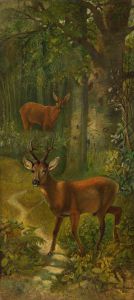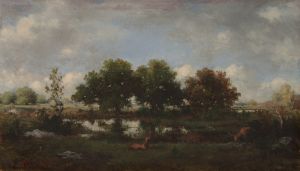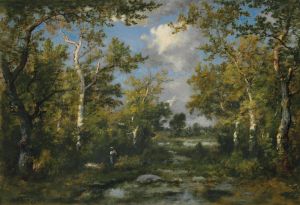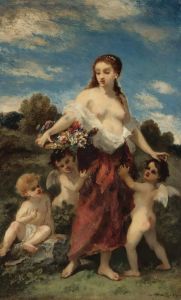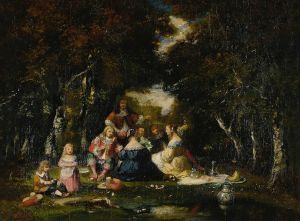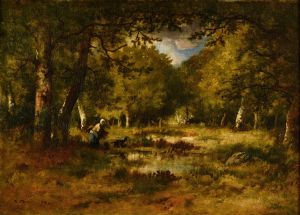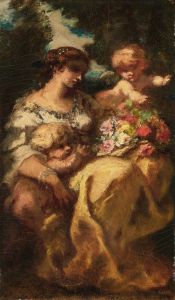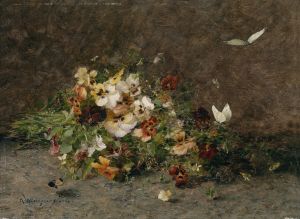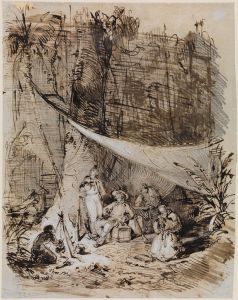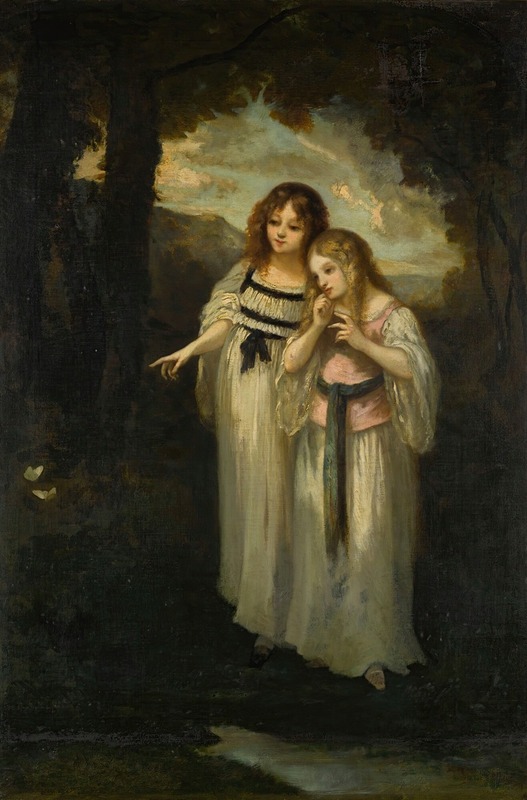
Papillons
A hand-painted replica of Narcisse-Virgile Diaz de La Peña’s masterpiece Papillons, meticulously crafted by professional artists to capture the true essence of the original. Each piece is created with museum-quality canvas and rare mineral pigments, carefully painted by experienced artists with delicate brushstrokes and rich, layered colors to perfectly recreate the texture of the original artwork. Unlike machine-printed reproductions, this hand-painted version brings the painting to life, infused with the artist’s emotions and skill in every stroke. Whether for personal collection or home decoration, it instantly elevates the artistic atmosphere of any space.
Narcisse-Virgile Diaz de la Peña, a prominent French painter of the 19th century, is known for his contributions to the Barbizon School, a movement that emphasized naturalism and the depiction of rural landscapes. One of his notable works is "Papillons" (Butterflies), which exemplifies his skill in capturing the delicate beauty of nature.
"Papillons" is an oil painting that showcases Diaz de la Peña's adept use of color and light to create a vibrant and lively scene. The painting features a lush, verdant landscape, teeming with flora and fauna. The focal point of the artwork is a group of butterflies, depicted with meticulous attention to detail, fluttering amidst the foliage. The butterflies are rendered in a variety of colors, adding a dynamic and whimsical element to the composition.
Diaz de la Peña's technique in "Papillons" reflects his mastery of the Romantic style, characterized by an emphasis on emotion and the sublime aspects of nature. His brushwork is both fluid and precise, allowing him to capture the ephemeral quality of the butterflies' movements and the dappled light filtering through the leaves. The overall effect is one of harmony and tranquility, inviting the viewer to appreciate the fleeting beauty of the natural world.
The painting also demonstrates Diaz de la Peña's influence from his contemporaries and predecessors. He was inspired by the works of Eugène Delacroix and Théodore Rousseau, both of whom were key figures in the Romantic and Barbizon movements, respectively. Diaz de la Peña's ability to blend their influences with his unique vision is evident in "Papillons," where the romanticized portrayal of nature is balanced with a keen observational accuracy.
"Papillons" is a testament to Diaz de la Peña's dedication to the Barbizon School's principles, which sought to move away from the formalism of academic art and towards a more personal and direct engagement with nature. This painting, like many of his works, was likely created en plein air, a practice that involved painting outdoors to capture the natural light and atmosphere more authentically. This method allowed Diaz de la Peña to infuse his landscapes with a sense of immediacy and vitality.
Throughout his career, Diaz de la Peña faced numerous challenges, including health issues and financial difficulties. Despite these obstacles, he remained committed to his art, producing a significant body of work that continues to be celebrated for its beauty and technical prowess. "Papillons" is a prime example of his enduring legacy, showcasing his ability to transform a simple scene into a captivating and evocative piece of art.
Today, "Papillons" is held in high regard by art historians and collectors alike. It serves as a reminder of Diaz de la Peña's contributions to the development of landscape painting in the 19th century and his role in the broader Romantic movement. The painting's delicate depiction of butterflies and its lush, natural setting continue to enchant viewers, offering a glimpse into the artist's profound appreciation for the natural world.








